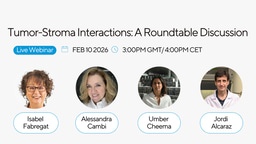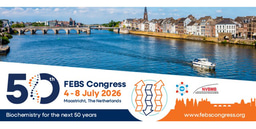FEBS Excellence Awardee spotlight: Florian Schur

Florian Schur is Assistant Professor at the Institute of Science and Technology Austria (ISTA), Klosterneuburg. After studying Molecular Biology at the University of Vienna, he did his PhD in structural biology at the European Molecular Biology Laboratory (EMBL) Heidelberg, Germany. He then started his own group in 2017, where he is studying the molecular mechanisms of cell migration and viral infection.
What is your current research focus?
My group studies the molecular organization of machineries that control cell migration and viral infection. We do so by developing approaches that integrate cell and structural biology using cryo-electron tomography (cryo-ET).
For example, we focus on actin filament networks enabling cell migration, where the interplay between actin-binding proteins and filament network geometries impacts emerging cell migration characteristics. Similarly, viral capsid proteins achieve highly variable shapes in pleomorphic viruses by forming locally symmetric assemblies. Here we continue our active development of cryo-ET approaches to study the conservation and diversity of retroviral capsid assemblies.
The combined interest in both of these questions is how higher-order protein assemblies with a defined underlying geometry assign function to a specific biological system. Cryo-ET offers a unique potential to address this question.
Lab webpage: https://schurlab.ista.ac.at
What drew you to work in this area?
I have a background in cell biology and ended up in structural biology rather by chance.
In one of my first scientific internships in cell biology, I started to work with electron microscopes. I remember that back then my former supervisor said that he was curious to see how long it would take until I became infected with the “electron microscopy virus”. Obviously not that long, since this method has become the defining aspect of my scientific career.
During my PhD I then got fascinated by real viruses, the way they assemble and how cryo-ET can be used to determine high-resolution structures from complex viruses.
When starting my own lab, I then aimed to combine my fascination for cell biology, viruses and cryo-electron microscopy method development. Nowadays cryo-ET and associated techniques, such as focused ion-beam milling, provide entirely new ways to look at important cell biological or virus-related questions. It is definitely an exciting time to see what kind of things become possible now, which one could not approach a couple of years ago.
What’s exciting in this field at the moment?
As for most areas of research, structural biology is in a phase of rapid methodological innovation. The ever-increasing potential of cryo-electron microscopy and new tools using machine-learning approaches, such as AlphaFold, continuously open up new research directions. Technology really drives discovery in our field, and it is exciting to see how this is constantly pushing the limits.
What would be your advice to PhD students and postdocs who would like to eventually start their own lab?
I guess the standard answer holds true: identify what really interests you, what are the open questions in the field and how you can contribute to it with your technique/expertise.
However, beyond that it is extremely valuable to have a network of people with whom one can talk, ask for advice, start collaborations, or exchange ideas. It also helps to stay open to other methods or biological topics, as one never knows what eventually might be linked to your specific biological questions.
What do you see as the most important role of a group leader?
There are probably many different opinions on what needs to be mentioned here, but key is clearly to create an environment that allows people to achieve their best. This of course includes providing resources and advice in projects. However, what I probably consider most important is to establish an atmosphere of enthusiasm and optimism.
Both are crucial when it comes to doing research, where it often can take months or even years until a project or even a single experiment has worked out. As a group leader it is therefore important to create enthusiasm about one’s work (which hopefully should come naturally), in order to also be able to motivate people that work with you.
How will the FEBS Excellence Award help you as an early-career group leader?
The FEBS Excellence Award provides us with the opportunity to establish a new research direction and also methodology in our lab, which is particularly challenging when one runs a new group. Specifically, we want to study three-dimensional cellular environments, such as fibrilous assemblies of the extracellular matrix, via cryo-ET.
I am therefore really grateful to the selection committee, for them believing in what we do and for seeing the potential in our approaches.
Top image of post: 3D rendering of actin filaments, by Jesse Hansen, PhD, Institute of Science and Technology Austria.





Join the FEBS Network today
Joining the FEBS Network’s molecular life sciences community enables you to access special content on the site, present your profile, 'follow' contributors, 'comment' on and 'like' content, post your own content, and set up a tailored email digest for updates.